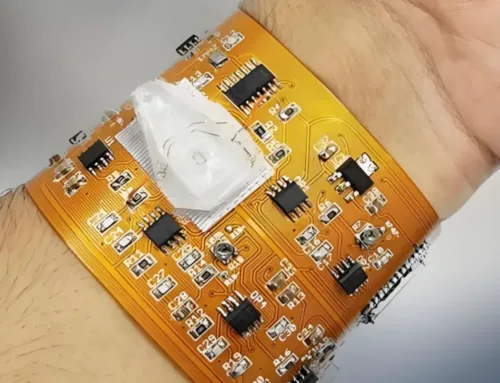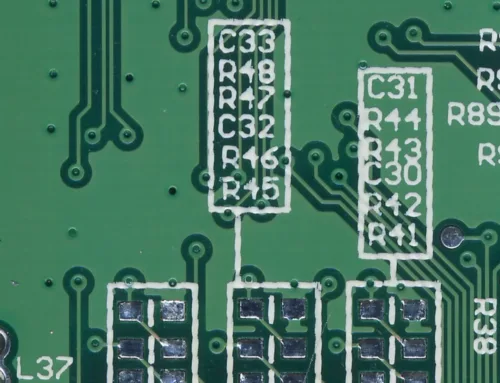Surface Mount PCB vs. Through-Hole: Which is Best for Your PCB Assembly and Manufacturing?

Table of Contents
Table of Contents
The backbone of modern electronic products, printed circuit boards provide power to both smartphones and medical devices. Engineers has two options surface mount and technology and through-hole technology while producing PCB layout. Every method offers specific benefits and drawbacks and the best selection depends on what project needs exist along with financial constraints and desired performance outcomes. This article analyzes Surface Mount PCBs together with through-hole technologies to help you choose the optimal choice for your PCB assembly and manufacturing needs.
What is Surface Mount Technology?
In Surface Mount PCBs components connect through soldering at designated pads or lands as opposed to through-hole placement. The size of Surface Mount Technology components such as resistors, capacitors, and integrated circuits is usually less than corresponding through-hole components. Their design includes flat leads or completely lead-free construction which helps them sit flat against the board.
What is Through-Hole Technology?
Through-hole technology refers to the older assembly method which uses drilled holes in the printed circuit board for component lead insertion. Soldering component leads to pads located on the opposite side of the board provides dual benefits of mechanical support and electrical continuity. Through-hole technology dominated PCB assembly for decades while maintaining relevance in particular applications currently.
Unlike surface-mount parts, through-hole components have pins that go through the PCB and tend to be larger in size. The soldering technique requires manual handling or automated wave soldering machines. The technique provides outstanding durability and consistent performance under high-stress operational conditions.
Surface Mount Vs Through-Hole: Big Differences
We can identify the optimal method for your project by examining the design, manufacturing, performance, and cost differences between SMT and through-hole techniques.
Size and Space Efficiency
Surface Mount Technology allows designers to produce miniaturized and dense PCB layouts. By using surface-mounted components designers can reduce the board footprint while maximizing component placement on both sides of the board. SMT emerges as the optimal choice for contemporary gadgets such as smartphones and wearables because compact size is a crucial requirement.
Through-hole technology needs additional board space because it relies on drilled holes and bigger parts. Pass-through leads on the board restrict the dense placement of components. SMT typically presents the best option for projects that require compact design solutions.
Manufacturing Speed and Automation
SMT shines in high-volume production. High-speed automated machines position thousands of components accurately per hour which makes large-scale PCB assembly and manufacturing both faster and less expensive. The reflow soldering technique enables multiple components to be attached at one time which results in faster production speeds.
Manual through-hole assembly takes longer to complete compared to other methods. Wave soldering automates the process partially but doesn’t reach the efficiency level of SMT when producing large quantities. Through-hole assembly remains the better choice for small-scale or prototype projects because it avoids the high automation setup expenses.
Durability and Reliability
The durable mechanical bonds created by through-hole technology establish its reputation for strength. PCBs that use through-hole technology gain strength through leads which pass through the board and receive soldering on the reverse side, providing enhanced resistance against vibration, shock and extreme temperatures. Through-hole technology receives widespread application in aerospace, automotive and industrial equipment because its sturdy structure ensures dependable performance.
While Surface Mount Technology connections work well in consumer electronics they become less reliable under harsh conditions. Due to their reduced size solder joints have increased vulnerability to stress which leads to potential failures when exposed to high-vibration or elevated temperature situations. The reliability of SMT has advanced substantially through modern materials and techniques developed over time.
Cost Considerations
The cost of a PCB project remains one of the primary considerations for budget planning. Due to automation processes and material conservation SMT becomes a cost-efficient choice for large-scale production runs. The use of smaller components and reduced board space minimizes material costs while automated assembly processes decrease labor expenses.
The cost of through-hole technology increases during large-scale production because it requires drilling holes and may involve manual soldering. Through-hole assembly becomes more economical than SMT for small production runs because it avoids the initial investment in automation equipment SMT requires.
Component Availability and Flexibility
SMT provides access to many more components including modern and tiny options. The majority of new electronic components come exclusively in surface-mount packages which establish SMT as the preferred technique for modern circuit designs. Industries that are advancing technological limits must pay special attention to this point, especially sectors like consumer electronics and medical devices.
Through-hole components remain widely available yet their usage is declining in new design applications. Through-hole technology remains the preferred choice for high-power components like connectors and transformers because these components typically lack SMT packaging options.
Repair and Prototyping
Through-hole components provide distinct advantages for prototyping and repair tasks. The bigger parts and reachable leads simplify manual soldering and soldering processes which proves to be perfect for design testing and adjustments. Through-hole technology attracts hobbyists and prototype engineers due to its straightforward design and ability to tolerate errors.
SMT utilizes small parts and compact designs which creates repair and modification difficulties without access to specialized tools. The need for specialized hot air rework stations and advanced soldering abilities makes the soldering process for surface-mount components inaccessible for small repair jobs and minor projects.
Future Trends in PCB Technology
The continuous evolution of electronics has led to SMT becoming the preferred method for most applications because of the needs for devices that are smaller in size while also being faster and less expensive. However, through-hole isn’t going away anytime soon. Through-hole retains relevance within specialized markets because it offers dependable performance alongside compatibility with specific components.
New developments in

MACHINE | SMT production | SMT equipment | SMT assembly | Pcbandassembly
technology including micro-SMT and 3D packaging expand design possibilities to achieve denser and more intricate circuit boards. Through-hole technology gains efficiency improvements for particular applications through innovations such as selective soldering.
Conclusion
Selecting between SMT PCB Board and through-hole assembly requires consideration of your project’s particular needs. SMT stands out for its superior efficiency and affordable solutions in modern high-volume production yet through-hole technology remains favored for specialized applications owing to its durability and prototyping simplicity. After analyzing the aspects of size, cost, durability and component availability you can select the most appropriate approach or combination of approaches that meets your project requirements.
Latest Blog
Contact us
Free Quote





